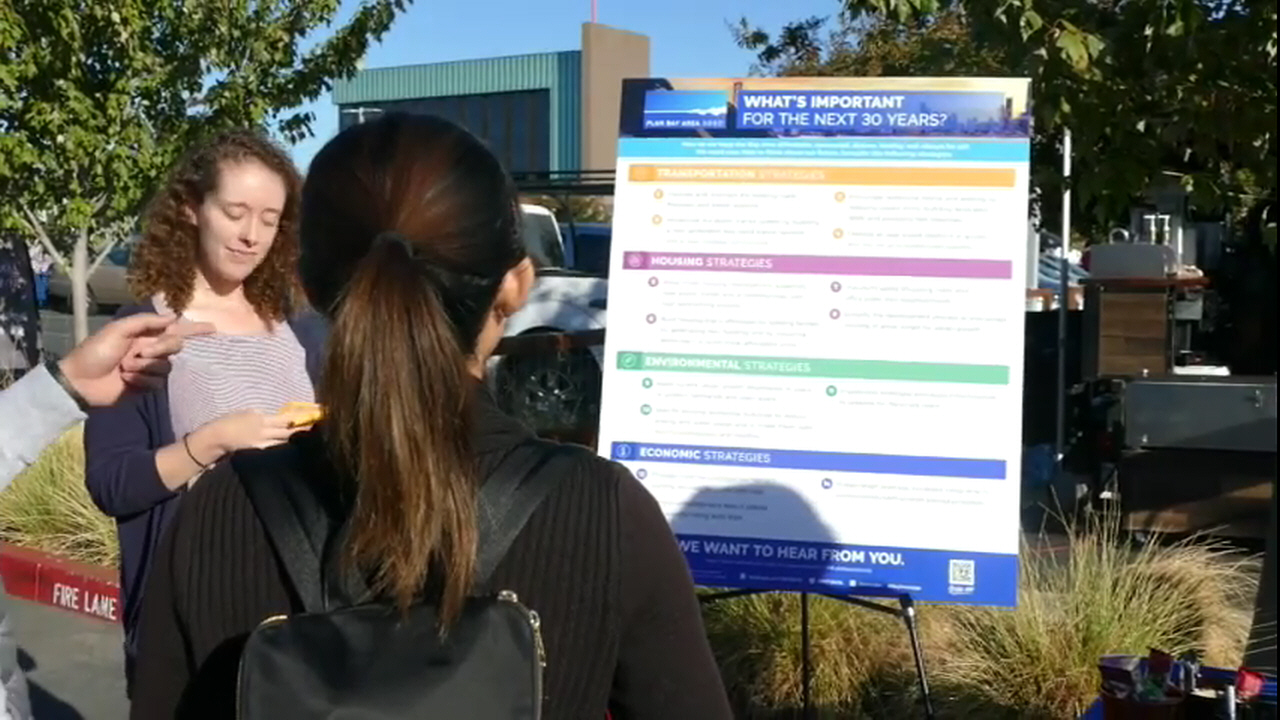Manipulation Suitable for an Anti-Democratic State
Posted by: Susan Kirsch – October 6, 2019 – 8:00pm
Reprinted from The Marin Post
There are more instances of the abridgment of the freedom of the people by gradual and silent encroachments of those in power than by violent and sudden usurpations.
James Madison, fourth president of the United States, 1809-1817
UPDATE: Click these links for copies of the INFORMATION FLYER and SURVEY FORM to use at popup events.
“Did you notice?” asked a community leader from Palo Alto after looking at the Plan Bay Area 2050 Public Engagement meeting schedule. “NOT ONE of the events is in Palo Alto, Los Altos, Menlo Park, Mountain View, or Sunnyvale? Why are so many cities in Silicon Valley—where the transportation and housing problems are the worst—excluded?”
Metropolitan Transportation Commission (MTC) and the Association of Bay Area Governments (ABAG) are supposedly inviting public engagement on their 30-year plan, called Plan Bay Area 2050. PBA is a centralized, 9-county effort to address transportation, housing, the environment, and the economy.
Community leaders, irked by past PBA manipulations and poor outcomes, object to the raw manipulation of the Public Engagement process. MTC’s planning chart “RHNA (Regional Housing Need Allocation) and Plan Bay Area Milestones,” names key activities over the next three years.
In October/November, the focus is on Public Engagement, Phase I: Narrowing Down the Strategies. Results will be used to develop the Draft PBA 2050 Blueprint (Nov-March 2020), a complex mix of regional forecasts for employment, population, income, in-commuting, and housing. The Blueprint is an academic’s dream, but an expensive, ill-suited house of cards for realistic planning to meet community needs.
When you think of “Public Engagement,” what do you picture? Information? Presentations at convenient times and locations? Discussion and deliberation? Q&A?
These are reasonable, tried and true components to meaningful public engagement. MTC doesn’t aim for “meaningful.” The questions asked by informed and caring citizens, during the 2013 hearings about PBA, were smart, challenging, and contentious. So now MTC hides behind a shoddy rendition of public engagement, one that keeps the public uninformed, quells critical thinking and discussion, but still qualifies for checking off a box labeled, “public engagement.”
For example, this two-month “public engagement process” depends on 28, two-hour pop-up events (think card table, MTC staff, display boards, and post-it notes). The majority of these events are held on week-day mornings at Farmer’s Markets in out-of-the-way communities like San Lorenzo, San Pablo, Napa (2), Hillsborough, San Carlos, E. Palo Alto, Vacaville (2), Vallejo, and San Rafael (2). But not one in the heart of Silicon Valley: a place that is arguably one of the most impacted.
John, a visitor at the first pop-up event at the Farmer’s Market at the Napa Fairgrounds on Saturday, October 5, commented, “Most people were at the farmer’s market to buy fall produce and flowers. When beckoned to talk to MTC staff about PBA 2050, they nodded and kept moving. This is a horrible way to go about public planning.”
Another attendee explained he wasn’t even allowed to write his own post-it note comment, but was “helped” by the MTC staff. Participants were given a tote bag emblazoned with their marketing message “Be Region Able.”
Another attendee commented, “It is a ridiculous show of government hubris that they think they can effectively plan for a thirty year horizon. The Soviet Union only had five- year plans and missed every one. Now the “geniuses” at MTC want to have us believe that a wonderful world awaits us if we allow them to plan for our future and give them billions of dollars.”
An MTC handout purportedly explains what PBA 2050 will do.
“Think of PBA 2050 as a roadmap that will identify the policies and infrastructure that can prepare the Bay Area for an uncertain future. Updated every four years, PBA2050 charts the course for the next 30 years.”
What they don’t say on the handout, but is noted on the “Integrating Equity” page of the website, is that previous Plan Bay Area plans have
“created significant challenges: a lack of adequate and affordable housing . . ., the displacement of long-time residents, a widening income gap between high-and low-income households, and a shrinking middle class.”
This is the trend perpetrated by earlier versions of PBA.
In response, community critics are asking and encouraging others to ask, “Who benefits from a 30-year plan that pretends to value public participation, but actually, actively and deliberately excludes the public from meaningful deliberations?”
We don’t need to go far to find answers. MTC, having excluded community values and voices in the past, builds steam as it barrels forward with plans to remake the Bay Area to suit corporate and global economic interests. It is a farce and cynical ploy to gain control of vast political and economic resources. No wonder it neglects the wishes and wisdom of elected officials, community leaders, and the citizens who live here, pay taxes, raise families, and seek the security that grows from truth and transparency: not simplistic pop-up events with post-it note public engagement.
What can be done? Raise Cain. Speak up.
- Attend a pop-up event, talk to staff, take pictures, and report on what you learn.
- Download and print copies of an information flyer to hand out.
- Fill out an event survey form and return it to us.
- Forward the full schedule of events to others in the 9-county Bay Area and urge attendance (see list below, organized by county).
- Contact your elected representative to the ABAG and MTC Committees to express your opinion about PBA 2050 Public Engagement. In Marin, contact Pat Eklund, Dennis Rodoni, and Damon Connolly.
- Find your niche to get involved to preserve meaningful participation.
For more information on Plan Bay Area 2050
Part I: Click Here: A Drive to Mega-Regional Power
Part II: Click Here: Regional Housing Control Total Assures Continued Crisis Fueled by Growth


